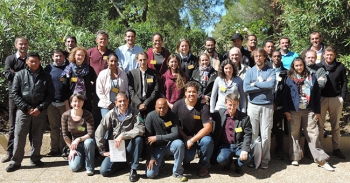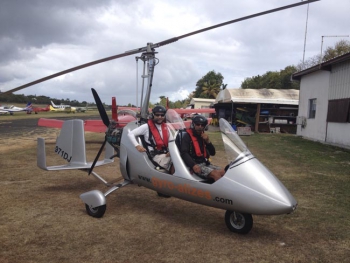The mission of tagging humpback whales in the Northern Islands was completed on April 13th, but the work has really only just begun. Of the 8 transmitters implanted, most of them emitted a signal for several days, and 3 are still emitting signals today. This is deemed a success considering the active behavior of these species during mating season. The first tag has been emitting a signal for the last 25 days and the movements of this whale with its calf, baptized “Soca and Joy” by the children of Saint-Martin, as well as other tagged whales have already improved the knowledge of the species behavior during this season. Amongst the important results already noted, the notion that each island “possesses” a specific group of whales has been called into question. The movement of the 8 tagged whales from island to island showed that certain whales had already travelled more than 1,700km passing through the U.S. Virgin Islands and the Silver Bank, whereas others come and go between Saint Martin, Saint Barths, Saba, Sint Eustatius, Barbuda and Saint Kitts… It also confirmed that the humpback whales are not simply “passing through” the Northern Islands, as indicated by the males’ songs, the presence of females and their newly born calves seen at a few days interval, and the groups of males pursuing the females. This behaviour shows us that today we are truly within an active reproduction zone that is of course trans-boundary. 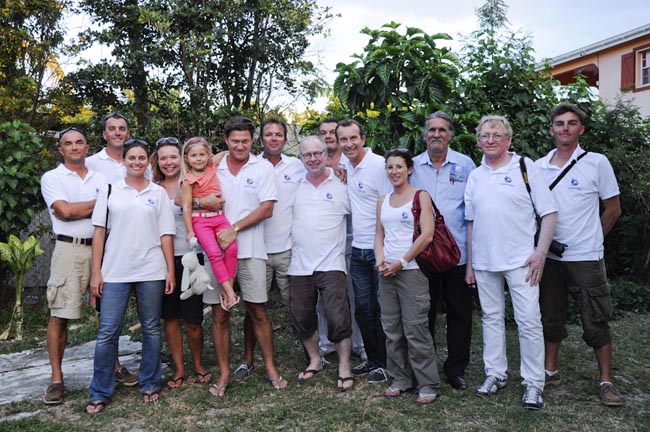 The results of this mission are more than promising if the 12 biopsies and 12 photographs of the caudal fin, that will be analyzed and compared with the existing databases, are also added to them. It is therefore essential to implement a strategy of regional cooperation to strengthen conservation efforts in this breeding zone. In the near future the waters of Dutch islands, Sint Eustatius and Saba, will also become part of a sanctuary in order to better protect the marine mammals, notably the humpback whales. It is desirable to strengthen ties with the island of Anguilla with regards to the relationship between Saint Martin and Anguilla. Ultimately, the pairing of the future sanctuary of the Dutch islands and the waters of Anguilla, would bring about a joint strategy for conservation and scientific missions throughout the breeding grounds of the humpback whales in the Northern Islands of the Lesser Antilles. Apart from the scientific aspect, this mission has also brought all the managers of the protected marine areas in the Northern Islands together, and involved specialists from Mayotte, Denmark, Guyana, the United States and the Netherlands. Nicolas Maslach, Director of the Saint Martin Nature Reserve, holder and founder of this project, thanks all technical and financial partners : CAR-SPAW, the Environmental Agency of Saint Barths, the Anguillan authorities, the Sint Maarten Marine Park, the Dutch authorities of Saba and Sint Eustatius. Without them, this mission would never have been realized. He also thanks the association “Mon Ecole, ma baleine” for the quality of their work carried out in several schools in Saint Martin. Building on the success of this mission, Nicolas Maslach is already organizing the MEGARA mission 2015.
The results of this mission are more than promising if the 12 biopsies and 12 photographs of the caudal fin, that will be analyzed and compared with the existing databases, are also added to them. It is therefore essential to implement a strategy of regional cooperation to strengthen conservation efforts in this breeding zone. In the near future the waters of Dutch islands, Sint Eustatius and Saba, will also become part of a sanctuary in order to better protect the marine mammals, notably the humpback whales. It is desirable to strengthen ties with the island of Anguilla with regards to the relationship between Saint Martin and Anguilla. Ultimately, the pairing of the future sanctuary of the Dutch islands and the waters of Anguilla, would bring about a joint strategy for conservation and scientific missions throughout the breeding grounds of the humpback whales in the Northern Islands of the Lesser Antilles. Apart from the scientific aspect, this mission has also brought all the managers of the protected marine areas in the Northern Islands together, and involved specialists from Mayotte, Denmark, Guyana, the United States and the Netherlands. Nicolas Maslach, Director of the Saint Martin Nature Reserve, holder and founder of this project, thanks all technical and financial partners : CAR-SPAW, the Environmental Agency of Saint Barths, the Anguillan authorities, the Sint Maarten Marine Park, the Dutch authorities of Saba and Sint Eustatius. Without them, this mission would never have been realized. He also thanks the association “Mon Ecole, ma baleine” for the quality of their work carried out in several schools in Saint Martin. Building on the success of this mission, Nicolas Maslach is already organizing the MEGARA mission 2015.
It is now possible to follow the movements of these whales on the Facebook page of Saint Martin Nature Reserve, or on their site www.seaturtle.org/ tracking/index.shtml?project_id=979.
On March 26th the Reserve invited the public to discover the Megara project at the Sandy Ground Cinema where they aired a thirty minute film, that had been filmed in Mayotte in 2013. The event was organized with the help of the Rotary Club that was in charge of the communication side and sale of tickets, to which over a hundred people responded.
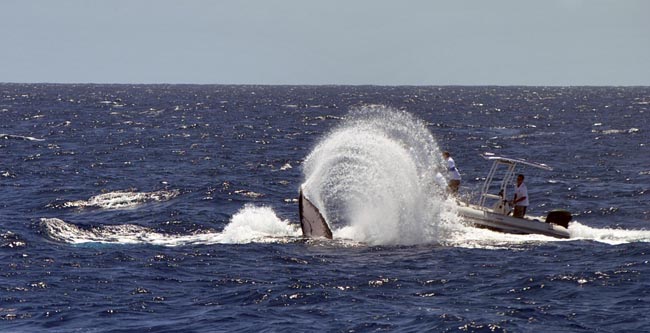
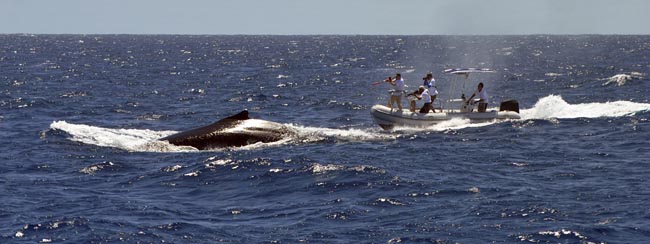
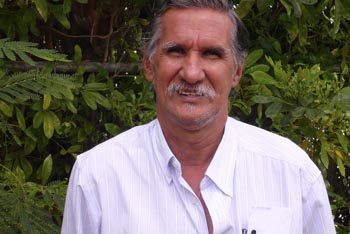

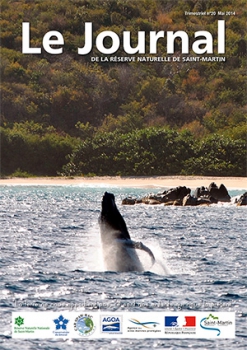
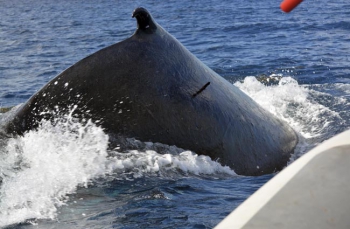



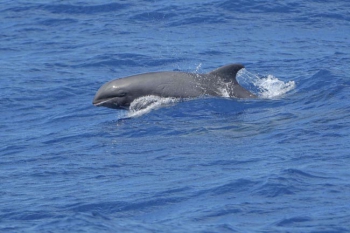
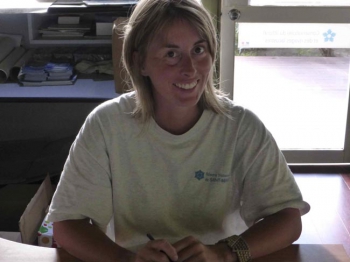
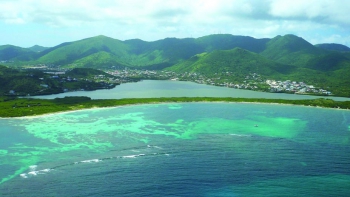
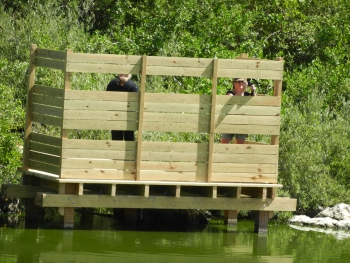
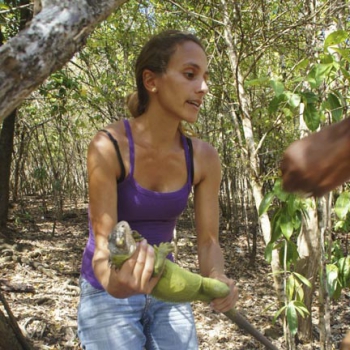

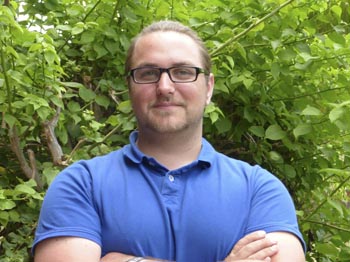
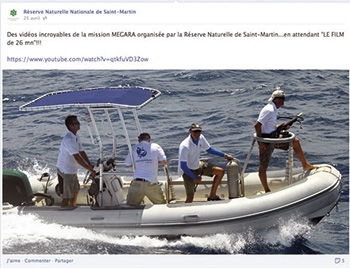
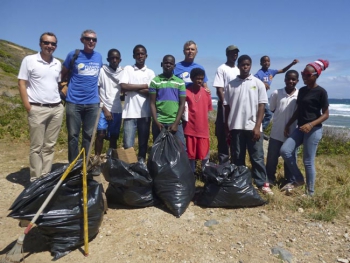
 Daniel Lewis who was recently hired as a guard by the Nature Reserve, presented his profession to the students, his interest in the protection of the environment and his passion for his island. This pilot class is studying tourism, under the convention signed between the National Education Board, the Tourist Office and the Collectivité, and is very interested in the career opportunities that are opening up little by little each year in the growing sector of ecotourism
Daniel Lewis who was recently hired as a guard by the Nature Reserve, presented his profession to the students, his interest in the protection of the environment and his passion for his island. This pilot class is studying tourism, under the convention signed between the National Education Board, the Tourist Office and the Collectivité, and is very interested in the career opportunities that are opening up little by little each year in the growing sector of ecotourism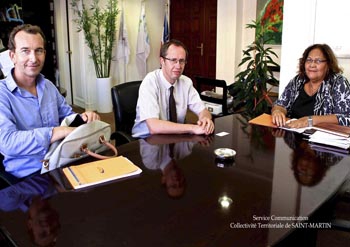
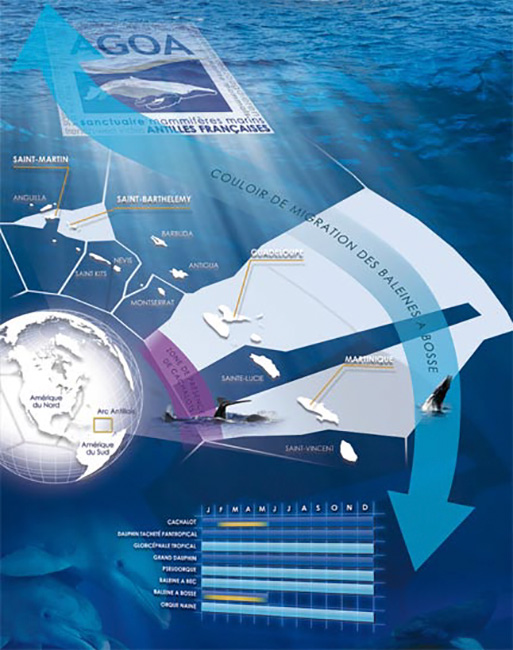
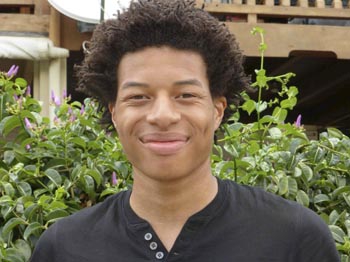

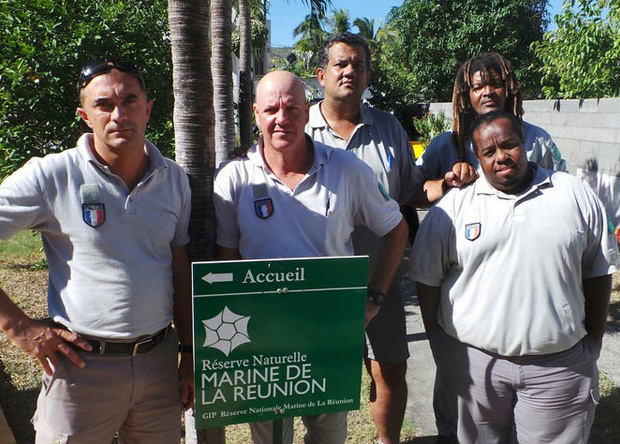
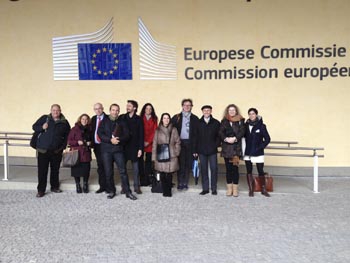
 With the cooperation of the IUCN (International Union for Conservation of Nature) and CAR-SPAW based in Guadeloupe, Saint Martin Nature Reserve had previously responded to a proposal from the European Commission to define the scientific criteria most relevant to the preservation of the biodiversity in the overseas territories. A work plan has been drawn up for the next four years.
With the cooperation of the IUCN (International Union for Conservation of Nature) and CAR-SPAW based in Guadeloupe, Saint Martin Nature Reserve had previously responded to a proposal from the European Commission to define the scientific criteria most relevant to the preservation of the biodiversity in the overseas territories. A work plan has been drawn up for the next four years.